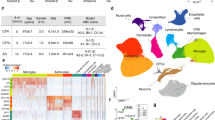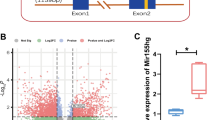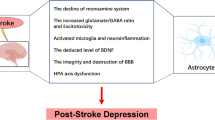Abstract
Caspases play crucial roles in the inflammatory response and in the cell pathway leading to apoptosis. Caspase 1 (ICE), 2 (Nedd2), 3 (CPP32), 6 (Mch2) and 8 (Mch5, FLICE) expression was examined using immunohistochemistry in the brains of rats and gerbils following systemic administration of kainic acid (KA). The distribution of caspase expression was compared with the distribution of c-Fos expression, a transcription factor that is produced in response to the excitotoxic insult. Strong caspase 2 immunoreactivity was found in microglia up to 6 h following KA administration. Focal strong expression of caspases 1, 2, 3, 6 and 8 was observed in astrocytes and neurons, from 12 to 48 h after KA injection, in areas in which a number of neurons were committed to die. This distribution was in contrast with the generalised distribution of c-Fos expression following KA administration. Only a minority of neurons in the entorhinal cortex, amygdala and hilus, but a majority of neurons in selected thalamic nuclei, exhibited strong caspase expression in KA-treated rats. Similar findings, although minimised, were observed in KA-treated gerbils. Double-labelling caspase immunohistochemistry and in situ end-labelling of nuclear DNA fragmentation disclosed co-localisation of strong caspase expression and nuclear DNA breaks in a small percentage of neurons but no co-localisation in astrocytes. Western blots of entorhinal cortex and neocortex homogenates showed cleavage of certain caspase substrates in KA-treated rats. The intensity of the bands corresponding to lamin B and protein kinase C-δ was decreased in the entorhinal cortex following KA administration. Several bands appeared in the entorhinal cortex and neocortex ¶in Western blots processed for the demonstration of poly(ADP-ribose) polymerase (PARP), thus indicating that other proteases, in addition to caspases, cleaved PARP following KA administration. Taken together, these findings indicate that KA excitotoxicity triggers caspase expression which, although predominant in regions subjected to irreversible cell damage, has only a weak association with the presence of nuclear DNA breaks and neuron cell death. Although these results suggest caspase activation, further studies have to be performed to elucidate whether caspase activation plays a crucial role in KA excitotoxicity.
Similar content being viewed by others
Author information
Authors and Affiliations
Additional information
Received: 2 April 1999 / Revised: 17 June 1999 / Accepted: 8 July 1999
Rights and permissions
About this article
Cite this article
Ferrer, I., López, E., Blanco, R. et al. Differential c-Fos and caspase expression following kainic acid excitotoxicity. Acta Neuropathol 99, 245–256 (2000). https://doi.org/10.1007/PL00007434
Issue Date:
DOI: https://doi.org/10.1007/PL00007434




